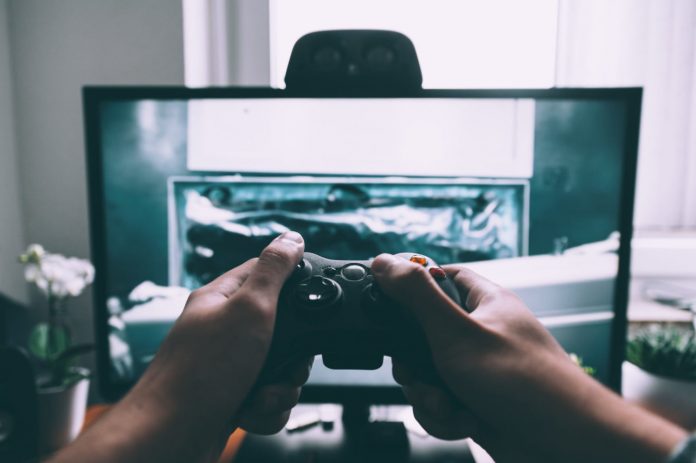This article is written by Vinay Kumar Palreddy, from Symbiosis Law School, Hyderabad. In this article, he expounds upon the laws available in India which can be used to censor video games.
Table of Contents
Introduction
The gaming industry experienced a boom due to the pandemic of COVID 19. Due to the free time available during the lockdown, there is an increase in the number of gamers and the time being spent on video games jumped at an alarming rate. It would not be an exaggeration to mention that almost all of the young population must have played video games at least once in their lives. Though video games and Esports evolved as a source of entertainment, a considerable amount of youth got addicted to them. On a positive note, some of them carved this affair as a source of income. But, at the same time, video games and Esports raise various kinds of legal, health, and moral issues relating to the gaming industry as well as the gamers. Hence, in light of the aforementioned importance, it is highly significant to discuss one of the legal aspects i.e censorship, which is mostly based on moral and ethical concerns.
Evolution and need for censoring video games
Video games are the interactive games played on an electronic platform with the help of user interfaces and various kinds of input devices and such games contain manipulating images of characters. The user interfaces used for playing video games are monitors, touchscreen, TV set, etc and input devices that are functional in playing can be enumerated as a keyboard, joystick, sensing devices, etc. Though the video games existed before the 1970s, the advent of games like Spacewar, Pong, etc made the games available to the general populace. The evolution of technology relating to gaming computers, consoles, mobiles, internet, and cloud computing majorly impacted the development of video games and its industry.
The period after 2010 can be considered a great phase for the video game industry as the availability of internet and mobiles for affordable costs has made a majority part of the population as potential consumers (this was not the scenario earlier). As far as the market share is concerned, a platform called NewZoo forecasted the worth of the video gaming industry to be $159 billion in 2020 in its Global Games Market Report. This worth is nearly four times greater than that of the movie industry and three times greater than the music industry (as estimated in 2019). In the Indian context, a Report of KPMG on the gaming industry suggested that the companies developing online and video games increased to 250 by 2018 from 25 in 2010. As internet traffic increased tremendously after the advent of Jio, the usage of data to play online games uproared since 2016.
Toxicity and violence are the major characteristics of most of the video games. These features seem to be attractive to the young minds and thus provide a huge scope in the market. As per Justice Alito in Bell v. Itawamba County School [MANU/FEFT/1520/2015], a ground to decide whether a video game is violent or not is to look at its negative effects on the minor’s interest. Some of the early games that depicted graphical violence are Death Race (1976) and Custer’s Revenge (1982). Though society was inattentive to these features due to the novice nature of the industry and fewer number of customers. But, in 1992, a game called Mortal Kombat which was inspired by martial arts films created a national controversy in the USA. It involved brutal violence in terms of kicks, blood splatters, skull-crushing, burning opponents accompanied by the engaging audio and visuals, which added to the intensity.
Other games like Custer’s Revenge and Night Trap, which released almost at the same time, involved violence against girls. A lot of the games that came after sparked similar controversies and made the societies of various countries rethink about the ethical and moral issues arising from these games. Though violent video games became available in India much later to that of the US, the current situation is perturbing as violent video games can easily be accessed by the population in India with the advent of technology. Shooting games like PUBG, Call of Duty (COD), and sexually violent games like GTA, Rapelay possibly give more aggression and become a factor in perpetrating crimes which are proved in various surveys.
Hence, most of the countries either censored or banned some of these games by subjecting them to domestic and international laws.
Laws for censoring video games in India
As the gaming industry is blossoming in India only for the last few years, there is no specific legislation regarding various aspects of gaming, especially censorship. The activity of regulating or censoring video games has not been in practice since the advent of video games in the country. Moreover, the courts have also not reflected on the censorship or regulations on video games except in one or two instances. Hence, no major judgments are available to that effect. But, we can cull and enumerate certain provisions from various laws that could temporarily guide the need for regulations and censorship of video games.
Article 19(2) of the Indian Constitution
Though the gaming companies have a right to practice or conduct their business freely under Article 19(1) (g) of the Indian Constitution, it can be restricted in the interest of decency and morality under Article 19(2) of the Constitution. As the business of the gaming industry cannot be an exception to that of the other legitimate businesses in the light of the freedom of trade, the reasonable restrictions could be imposed as mentioned in the Constitution in case such business crosses the limits of any grounds imposed in Article 19(2).
In the case of M.J.Shivani v. the State of Karnataka, it was held that though the owners of video games have the freedom to conduct business, they do not have any power to expose children to unregulated video games. Moreover, as mentioned in the case of Narendra Kumar v. Union of India, the Supreme Court attempted to review all the earlier decisions on the subject of ‘reasonable restrictions’ and held that the term ‘restriction’ even extends up to prohibiting something if such a thing shackles the grounds mentioned in Article 19(2). Hence, in light of the aforementioned case, it could be established that a video game could be banned or prohibited in case it deprives the decency and morality of a society.
Herein, the expression ‘decency and morality’ assumes greater significance. As some of the video games involve extreme violence, debauchery of minds, and sexual barbarity, the limitations and censorship could be imposed on the premise of decency and morality which is mentioned in Article 19(2). It might occur to most of our minds that the indecency or immorality in our society is concerning the standards of sexual morality in which case the censorship under this Article could only be exercised upon only those video games which involve sexual violence.
But, in the case of Ramesh Prabhoo v. Kashinath Kunte, the court has put forth a broader perspective on the notions of ‘decency’ and ‘morality’. The court held that these notions are wider than that of sexual morality and the ‘decency’ means to live up to or comply with the standards of usual behaviour and propriety in society. To be specific, all those elements which are shocking or disgusting to the general populace can be recognized as indecent or immoral.
Hence, in the light of the aforementioned case, the video games depicting brutal violence or sexual violence can be considered as portraying indecent or immoral notions thus can be censored or restricted. It is pertinent to mention that these restrictions cannot be directly imposed under this provision instead, laws can be made to that effect.
Article 39(f) of the Indian Constitution
Article 39(f) of the Constitution is a Directive Principle which provides for the safety and security of the children. It states that the children shall be provided with the circumstances in which they will develop in a healthy way along with the protection against exploitation and moral or material abandonment for youth and children. Though it is unenforceable, it is a suggestion for the government henceforth provides the power to amend laws to achieve the aims provided in the Article. Herein, we need to understand as to how this provision is related to the censorship of video games.
First of all, it is a solid fact that video games are majorly played by the youth and children including those who are at tender ages. For instance, a survey published in the Indian Journal for Social Psychiatry suggests that half of the students between the ages of 13 to 16 play video games, and 17.5% of them face the problem of addiction. Moreover, it is already expounded with a lot of examples as to how video games negatively affect the players. It is the same scenario with the children. There are high chances that the children could easily become prey for cyberbullying, threats, sexual abuses, and economic exploitation because of the freedom and anonymity a general online game provides for. To substantiate this, let us consider the example of PUBG where it is very easy to anonymously bully others just by using any fake name.
All these lead to either traumatic experiences of children or change of moral standards in the children as well as a youth which is directly invoking this provision of the Constitution. Also, children could not always be a victim but also could become perpetrators as they could be unaware of the consequences of their acts affecting their healthy development. In the case of Lakshmi Kant Pandey v. UOI, while emphasizing the welfare of children in the light of various laws, Supreme Court observed that the welfare of the community is directly proportional to the welfare of the children. Hence, due to the aforementioned circumstances and the judgment, the government could regulate or censor the video games which are abating the welfare of children under Article 39(f) of the Constitution.
Section 5(B)(I) of The Cinematograph Act, 1952
This section provides for the restriction of film certification in case a film is against certain grounds among which decency and morality are one of them. This can be used as a censorship tool in case a video game is infringing the standards of morality and decency in society. Though there is no judgment or law declaring video games to be part of cinematography in India, in the case of Golden China TV Game Centre & others v. Nintendo Co. Ltd [MANU/SASC/0003/1996], the South African Supreme Court held that video games are part of the cinematography and films. In the light of the aforementioned judgment, a video game could be brought into the purview of this Act and censorship could be invoked accordingly.
Section 292 of the Indian Penal Code, 1860.
This provision of the IPC criminalizes the sale, distribution, or publication of obscene material through any of the objects. Hence, if any video or online game publishes or contains obscene material, such a game can be censored under the aforementioned Section. Herein, it is pertinent to understand that the distribution of such video games could be considered as a crime under this provision but not the purchase or acquisition of such objects for personal use. For instance, In the case of Abdul Rasheed v. the State of Kerala, the court held that if a certain object which is obscene or contains obscene material is for the personal use of the accused and not for publication or distribution, Section 292 of IPC would not be attracted. Hence, the players possessing video games that contain obscene material and are meant for personal use cannot be charged under this Section.
Before the enactment of the Information Technology Act, 2000, this provision covered the publication of obscene material even in electronic form. Hence, IPC provision was attracted in numerous cases where electronic gadgets like consoles and CD’s are involved. But after the enactment of this Act, the general law i.e IPC was shadowed by special law i.e IT Act, 2000 in penalizing most of the electronic crimes.
Section 67 of the Information Technology Act, 2000
Section 67 penalizes the transmission or publication of obscene material in the electronic form, including video games. As it is already substantiated with a judgment that the term “obscene” is wide to include any material having the potential to corrupt and deprive or any other material which is shocking to the normal society, this provision also carries the same notion. The censorship can be done to the part of a video game which is deemed as obscene under this provision. The punishment is also provided under this section as imprisonment till 3 years and a fine up to Rs.5 lakhs for first conviction and imprisonment of 5 years and fine up to Rs. 10 lakhs in a second conviction.
Section 67A of the Information Technology Act, 2000
In case a video game contains sexually explicit material which is differently categorized from obscenity, such video game could be restricted under this Section. The punishment for the first conviction is mentioned in this provision as imprisonment up to 5 years and a fine up to Rs.10 lakhs and the second conviction carries imprisonment up to seven years and a fine up to Rs.10 lakhs.
Indecent Representation of Women (Prohibition) Act, 1986
The IRWP Act, 1986 was enacted as a special law that is intended to curtail the indecent representation of women in any manner. This can equally be attributable in case a video game indecently depicts women.
Conclusion
Though these laws can temporarily be invoked as the problem of obscenity in video games is new in India, there is a lot of scope for the development of law in this regard. Moreover, the censorship and regulations on video games are necessary as there is a huge base of consumers consisting of children and youth who potentially do not understand the negative effects of unbridled and offensive content. In the light of Constitutional importance and the practical ill effects, we hereby hope to look forward to the enactment of specific laws for censoring video games soon.
References
LawSikho has created a telegram group for exchanging legal knowledge, referrals and various opportunities. You can click on this link and join:
 Serato DJ Crack 2025Serato DJ PRO Crack
Serato DJ Crack 2025Serato DJ PRO Crack











 Allow notifications
Allow notifications



